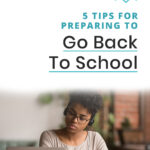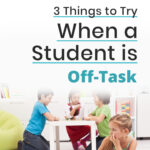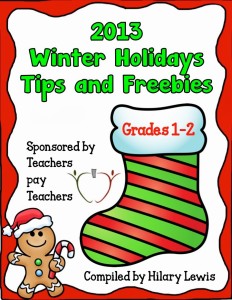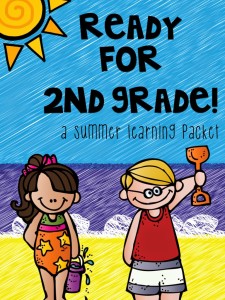You’re feeling refreshed and rejuvenated (hopefully!) after a long break. The kids will have mixed emotions – some will be excited to be returning and to see their friends, while others may not quite be ready to get back into a routine. Either way, you know there’s tons of work and learning to be done for the remainder of the year! Now, the question is, how do you come back to school with your students and ensure a strong re-start?
Whether your long break is a random 4 day weekend or two weeks over the holidays, if you don’t plan for a reset upon returning, things may feel “off.” You may start to see some behavior issues and even backtracking in academic progress. To deal with this, we want to remind students of routines and expectations – and it’s absolutely possible to have FUN while doing it!
In this post, I have a video (and transcript, if you prefer to read) that provides tips for resetting your class after a break!
And by the way, if your “long break” was actually summer vacation, you might prefer to read this blog post that’s geared more toward the beginning of the school year: 5 Tips For Preparing To Go Back To School.
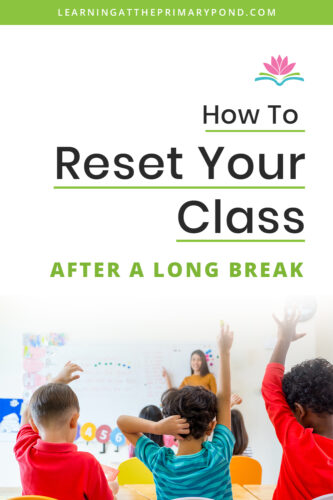
Transcript if you prefer to read:
“Hey, I’m Alison from Learning At The Primary Pond. I’m a literacy specialist, and in this video I’m going to give you some actionable tips to help you have a really good restart with your students after a long break. Before we dive in, if you haven’t subscribed to my channel (https://www.youtube.com/@learningattheprimarypond, make sure to do that now and then also hit the little bell so that you’re notified every time I post a brand-new video about teaching literacy in K-2.
If you’re anything like me, you love a good break and it helps you feel recharged and just ready for your students again when you come back. Breaks are important, right? The human body needs to rest. Our kids need a break, and we might expect when our students come back to just be able to pick up where we left off. However, if you’ve been teaching for any length of time, you know that that’s not always the case.
I remember, it was not my first year teaching, but it was my first year teaching kindergarten, I believe. And it was almost a year round school setup where I saw the kids for most of August, September and then we had a full week break in October. And it was great. I enjoyed that, but literally I felt like they forgot everything when I came back. And I was relatively new to teaching at that time. So it was sort of a shocker to me. If you’ve ever had that experience and just been really surprised by how much your students forgot or how much review they needed, then you’re definitely not alone. Let me know in the comments if you’ve ever experienced a little bit of some transition pains as you’re easing back in. This is totally normal, right? It’s not necessarily that you’ve done anything wrong, but I do have some tips that have really helped me and my students ease back in.
The first piece of advice I have is to go back to the basics. They should know what to do, especially if you have been in school for a while and really taken your time teaching procedures and routines, right? However, the first few days after break are a really good time to review those procedures and routines. And something that I like to do, especially if I haven’t already created anchor charts, maybe little posters in the classroom for routines and procedures, is actually to create them then. Now, you might just be creating fresh ones, maybe you did some at the beginning of the school year, but what you can do is say, ‘Okay, now that we’ve been gone for however many weeks or however many days, I want you to remind me what do we do when it’s time for lunch?’ The kids can tell you, you can write on the poster and then you can hang it up. And then my recommendation is to actually practice. If you have a longer break, the first couple of days back should be more similar to the first few days of the school year as far as how slowly you’re going through things and how you’re modeling and having students model how you’re practicing.
I really recommend that you build extra time into your schedule. Don’t plan as much as you normally would for the first couple of days back after a break so that you don’t feel rushed, and so that you feel like you have that time. If they’re getting ready for lunch in that example, and they’re not doing what they’re supposed to be doing, you say, ‘Okay, time out, let’s do this again.’ I really feel like that buffer time is important. You want to take your time here, otherwise, you may be forced to take the time later on when they’re not doing what they’re supposed to be. Just like at the beginning of the year, sometimes we have to go slow at first in order to speed up.
As you’re doing all of this, I feel like it’s also helpful to have in mind you want to be warm and loving to your students. You’re a teacher, that’s why you’re a teacher. But also think about how you can reset what you have allowed to happen in your classroom. If there’s anything you have allowed to happen in your classroom that you don’t want happening anymore. So work on finding that warmth, but also a firm balance with your boundaries. It’s a great time, I just feel like, for us as teachers, to reset and really examine what has been going well and what do I need to improve on? Where do I need to change what I’m allowing in the classroom?
My second piece of advice is to change it up. So I know we’ve been talking about going back to basics and routines, but also if you have noticed anything that wasn’t working for the first part of the year or whatever amount of time you had before this break, now is a good time to change a couple of things, not everything, but a couple of things.
I always like to have a piece of paper or you can have a document on your computer where you keep track over time, the things in your classroom or with your students that you want to change. And so you may have that list, you may not, and you need to reflect back. But maybe the way the classroom is physically set up, maybe your daily schedule, how you’re doing your small groups, now’s the time, right? The kids are having a fresh start, especially if it’s after a multi-week winter break. So if you make small changes, you’re going to be teaching, reteaching procedures and routines anyway. So now’s a really good time to do that. So change it up if you feel that small changes would be helpful.
My next tip is actually more about you than your students. This tip is to be aware of your own wellbeing and mental health. Kind of a clichéd saying, but we can’t pour from an empty cup, right? I don’t know why, but for whatever reason, transitions, whether it’s… Well, if it’s going from school to summer break, I have no problem there. Going from school to winter break, no problems. But coming back to school after a break, honestly can be a little bit tough for me. I don’t know if you relate to that, but it’s easy to feel really overwhelmed. You’ve been relaxing, maybe you’ve been doing a little bit of school stuff, but nothing as intense. And then all of a sudden you have all of these lessons to plan for and you’re like, ‘Oh my gosh, I didn’t leave my classroom quite as neat as I would like to have left it before the break.’ And then, ‘Oh, I want to make all these changes.’ It can be a lot.
As I said before, when you’re planning your lessons and your activities, it’s almost like for the first few days after break, it’s almost a benefit to you too, because you make a slower pace for your students, but it also creates a little bit of a slower pace for yourself, which is really nice.
Maybe you want to plan something nice for yourself, whatever makes you happy. Whether it’s just time to read a book and drink some coffee by yourself or getting your nails done or whatever makes you happy, you might want to have something to look forward to for your first week back. If it has been a significant break, that can definitely help. And then just be aware of your own feelings and ask yourself throughout the school day, but at home too, ‘What do I need right now?’ And just think about it as a time for a reset. Maybe it’s also time for reset with your work-life balance, and maybe you want to have a little more life alongside the work. Maybe you want to reset some new boundaries about how late you’re staying after school and how much schoolwork you’re willing to do at home, if any.
My last tip is to make school as engaging and fun as possible. School doesn’t have to be like going to an amusement park, right? But especially with our little ones, we do want school to be enjoyable. So if you can get creative, hopefully having a break will give you some sort of mental space to do that. If you can get creative with how could I make XYZ part of the day more fun? I feel like that will help the students enjoy their transition back and it’ll help you enjoy the transition back too. This is just an example of a simple way to keep the kids learning and also make it fun and not overwhelm yourself.
These are from my No Prep Phonics games (https://www.teacherspayteachers.com/Product/No-Prep-Phonics-Games-Bundle-K-2-MEGA-Bundle-SOR-aligned-7252712). I will include a link below this video so you can check those out. The nice thing about these is you literally just print them out. They have words for the kids to practice reading, sometimes also writing, depending upon what the game is. You match to whatever skill you’re teaching. So it’s literally no work for you, it’s just print and you’re good to go. And it’s also fun for the kids because they like to play games. That’s what makes it fun. You could do these in small group and then they become a center. They’re pretty simple. So once the kids know how to play a game, you can continue giving them different versions for different skills as the year goes on.
I’ll include the link for that. I hope that this video was helpful. If you’re transitioning back after a long break, good luck. You’ve got this. Don’t forget to take care of yourself. Again, thanks for watching. Don’t forget to hit the like button, subscribe (https://www.youtube.com/@learningattheprimarypond), and I’ll see you in my next video.”
Conclusion
I hope these ideas are helpful as you think about planning for your return after break!
Another thing to consider as you return back from break is YOUR mental health! It can be tough for us to transition back, too, so the easier you can make things on yourself, the better.
For some no-prep, highly engaging activities that will help your students (and you!) ease back in, grab my No-Prep Phonics Games. These are available for Kindergarten, 1st grade, and 2nd grade. They’ll save you tons of time when you’re prepping centers or independent work for after break!
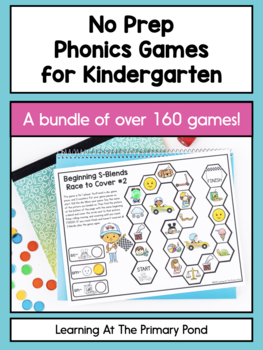
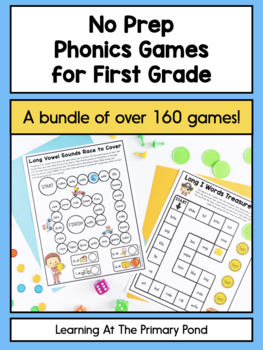
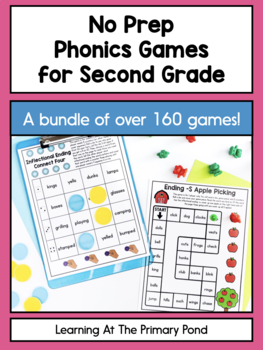
Happy teaching!

